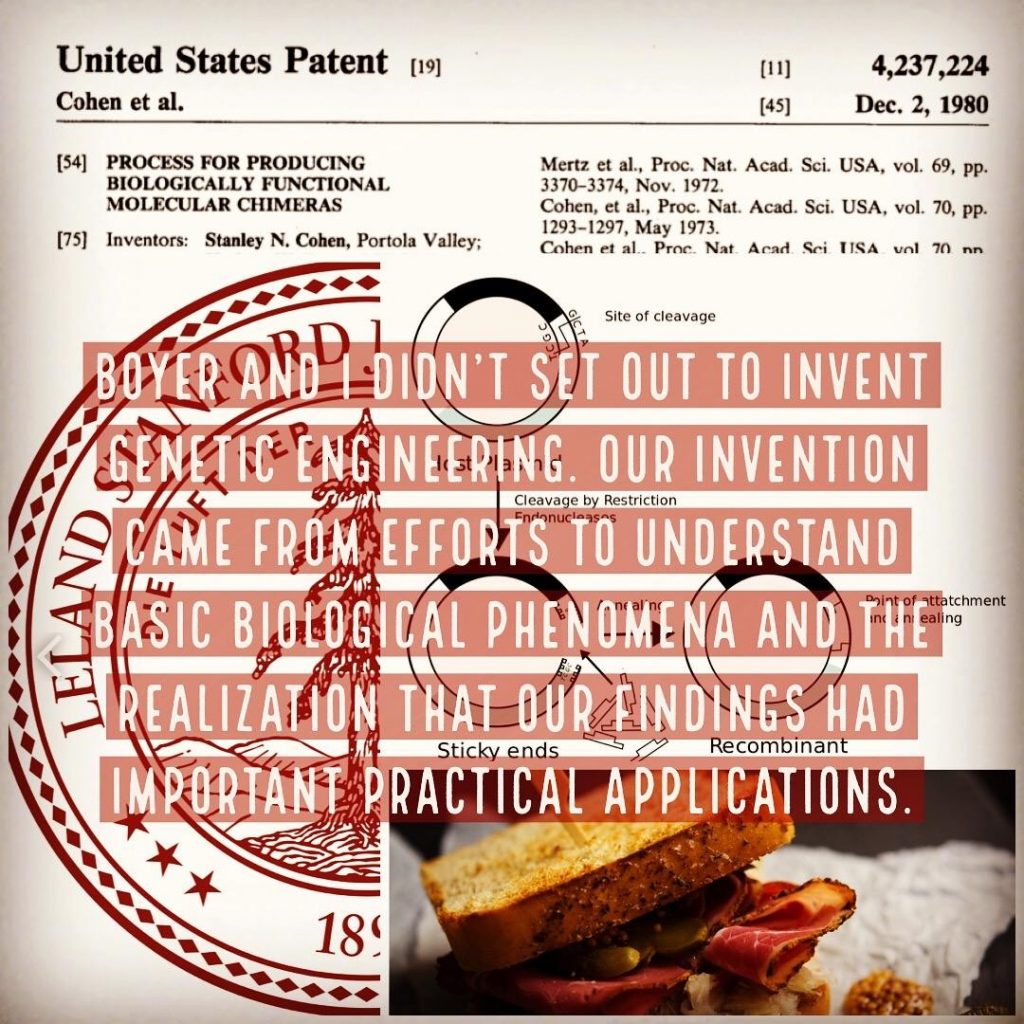In 1972, Stanley Cohen & Herbert Boyer laid the foundation for the biotechnology industry with the idea of recombinant gene expression while munching on corned beef and pastrami sandwiches during a conference on bacterial plasmids.

Cohen of Stanford University brought the idea of isolating specific genes in antibiotic carrying plasmids and cloning them through introduction to E. coli bacteria. Boyer of University of California San Francisco contributed the idea of a restriction enzyme that cut DNA strands at specific sequences, producing cohesive ends that could stick to other pieces of DNA.
The main Cohen & Boyer patent is U.S. Pat. 4,237,224 “Process for producing biologically functional molecular chimeras.” The patent was filed in 1974, granted on December 2, 1980, and expired 17-years after grant in 1997. The last Cohen/Boyer patent expired in 2001.
“Boyer and I didn’t set out to invent genetic engineering. Our invention came from efforts to understand basic biological phenomena and the realization that our findings had important practical applications.”
Stanley N. Cohen
The Cohen-Boyer patents were licensed to cover an estimated 2,442 new recombinant DNA (rDNA) products to 468 companies representing US $35 billion in sales. The licensing program brought US $435 million to Stanford and the University of California.
